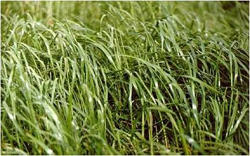Making the most of silage production
Providing forage in marginal upland areas of Europe such as the Alps and the mountainous areas of Scotland takes a great deal of management. The altitude is too high to cultivate high-energy forage crops like maize. Consequently, the farmer is reliant on other crops, particularly ryegrasses, that are resistant to the rigours of the cold wet climate. The SWEETGRASS project aimed to make things easier for the livestock farming fraternity in less favoured areas by improving existing ryegrass varieties. High levels of water-soluble carbohydrates (WSC) in ryegrass breeding would, they reasoned, improve livestock rearing from two perspectives. Firstly, the use of high WSC grasses reduces the nitrogen output in faeces and urine and secondly, tends to produce better quality silage. Project partners at the Institute of Grassland and Environmental Research in Wales researched into the most effective management strategies for silage production. The high WSC variety AberDart was used in trials to pinpoint the most effective methods, including measures to maintain the high WSC levels. With high sugar levels, lactic acid production is encouraged that in turn lowers the pH. Acidic conditions conserve nutrients and inhibit other microbial growth. This avoids silage spoilage that can have a very negative effect on livestock production. The agricultural scientists found that the most successful way to produce high-quality silage was by rapid wilting, possible in dry sunny conditions, to encourage an elevated WSC content. However, taking into account the typical weather in upland areas, a rain-free period after harvest may not occur. In this case, addition of acid-based chemicals to discourage growth of anaerobic bacteria like clostridia and the use of a variety with relatively high WSC content is recommended. The Welsh scientists have outlined validated methods for upland farmers to successfully manage silage production from high WSC ryegrasses. Conservation, animal welfare and production levels from marginal land may all benefit from the results of this research.







